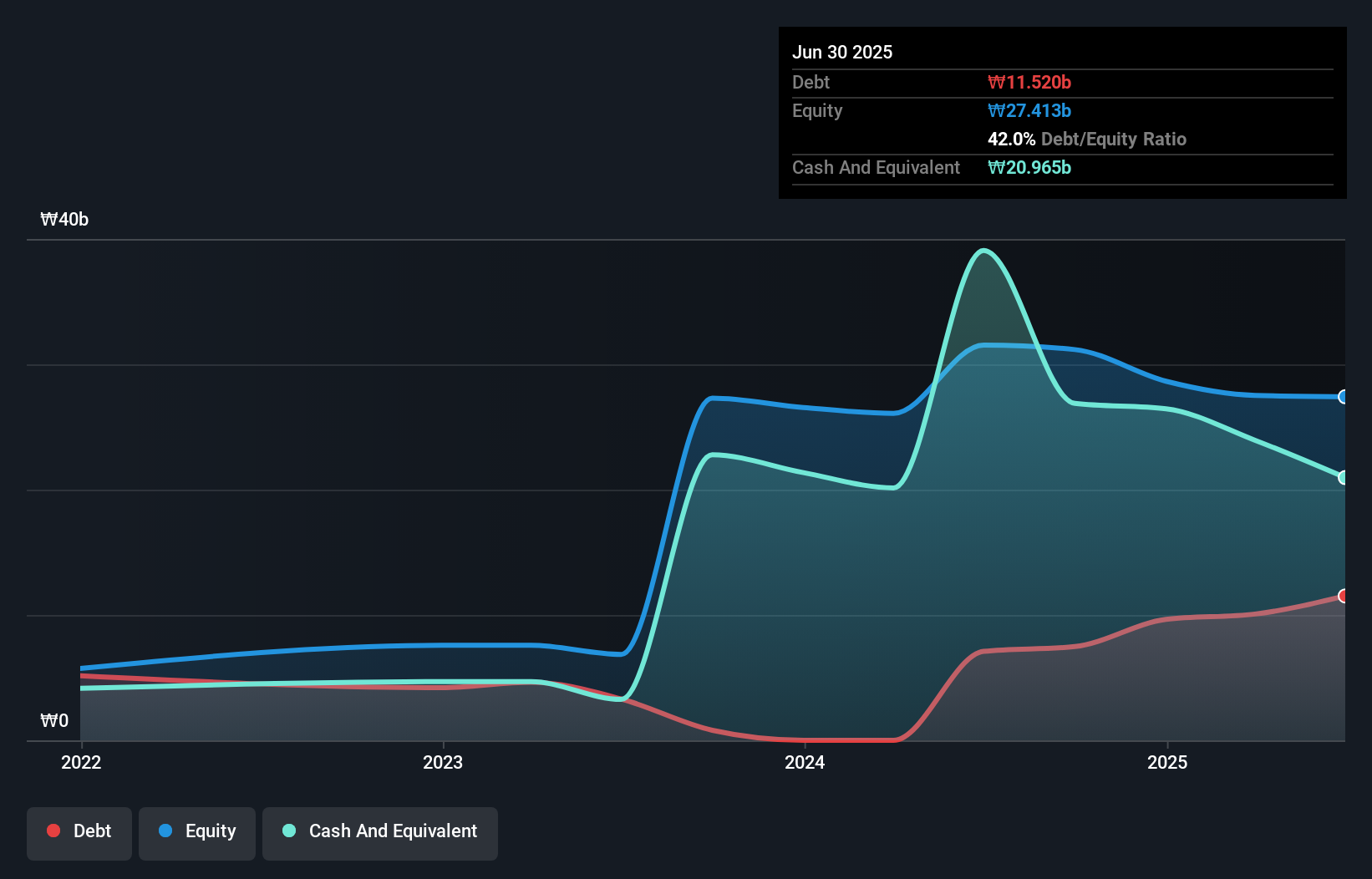Howard Marks put it nicely when he said that, rather than worrying about share price volatility, 'The possibility of permanent loss is the risk I worry about... and every practical investor I know worries about.' So it might be obvious that you need to consider debt, when you think about how risky any given stock is, because too much debt can sink a company. We can see that IMT Co., Ltd. (KOSDAQ:451220) does use debt in its business. But is this debt a concern to shareholders?
When Is Debt A Problem?
Debt and other liabilities become risky for a business when it cannot easily fulfill those obligations, either with free cash flow or by raising capital at an attractive price. If things get really bad, the lenders can take control of the business. However, a more usual (but still expensive) situation is where a company must dilute shareholders at a cheap share price simply to get debt under control. By replacing dilution, though, debt can be an extremely good tool for businesses that need capital to invest in growth at high rates of return. The first thing to do when considering how much debt a business uses is to look at its cash and debt together.
What Is IMT's Net Debt?
As you can see below, at the end of June 2025, IMT had ₩11.5b of debt, up from ₩7.09b a year ago. Click the image for more detail. But it also has ₩21.0b in cash to offset that, meaning it has ₩9.45b net cash.

A Look At IMT's Liabilities
The latest balance sheet data shows that IMT had liabilities of ₩21.8b due within a year, and liabilities of ₩7.47b falling due after that. Offsetting these obligations, it had cash of ₩21.0b as well as receivables valued at ₩4.15b due within 12 months. So it has liabilities totalling ₩4.17b more than its cash and near-term receivables, combined.
Since publicly traded IMT shares are worth a total of ₩88.1b, it seems unlikely that this level of liabilities would be a major threat. But there are sufficient liabilities that we would certainly recommend shareholders continue to monitor the balance sheet, going forward. While it does have liabilities worth noting, IMT also has more cash than debt, so we're pretty confident it can manage its debt safely. When analysing debt levels, the balance sheet is the obvious place to start. But it is future earnings, more than anything, that will determine IMT's ability to maintain a healthy balance sheet going forward. So if you're focused on the future you can check out this free report showing analyst profit forecasts.
See our latest analysis for IMT
In the last year IMT wasn't profitable at an EBIT level, but managed to grow its revenue by 305%, to ₩23b. That's virtually the hole-in-one of revenue growth!
So How Risky Is IMT?
By their very nature companies that are losing money are more risky than those with a long history of profitability. And we do note that IMT had an earnings before interest and tax (EBIT) loss, over the last year. And over the same period it saw negative free cash outflow of ₩4.7b and booked a ₩4.3b accounting loss. But the saving grace is the ₩9.45b on the balance sheet. That means it could keep spending at its current rate for more than two years. The good news for shareholders is that IMT has dazzling revenue growth, so there's a very good chance it can boost its free cash flow in the years to come. High growth pre-profit companies may well be risky, but they can also offer great rewards. The balance sheet is clearly the area to focus on when you are analysing debt. However, not all investment risk resides within the balance sheet - far from it. Case in point: We've spotted 2 warning signs for IMT you should be aware of, and 1 of them is a bit concerning.
If you're interested in investing in businesses that can grow profits without the burden of debt, then check out this free list of growing businesses that have net cash on the balance sheet.
New: AI Stock Screener & Alerts
Our new AI Stock Screener scans the market every day to uncover opportunities.
• Dividend Powerhouses (3%+ Yield)
• Undervalued Small Caps with Insider Buying
• High growth Tech and AI Companies
Or build your own from over 50 metrics.
Have feedback on this article? Concerned about the content? Get in touch with us directly. Alternatively, email editorial-team (at) simplywallst.com.
This article by Simply Wall St is general in nature. We provide commentary based on historical data and analyst forecasts only using an unbiased methodology and our articles are not intended to be financial advice. It does not constitute a recommendation to buy or sell any stock, and does not take account of your objectives, or your financial situation. We aim to bring you long-term focused analysis driven by fundamental data. Note that our analysis may not factor in the latest price-sensitive company announcements or qualitative material. Simply Wall St has no position in any stocks mentioned.
About KOSDAQ:A451220
Excellent balance sheet with very low risk.
Market Insights
Community Narratives




